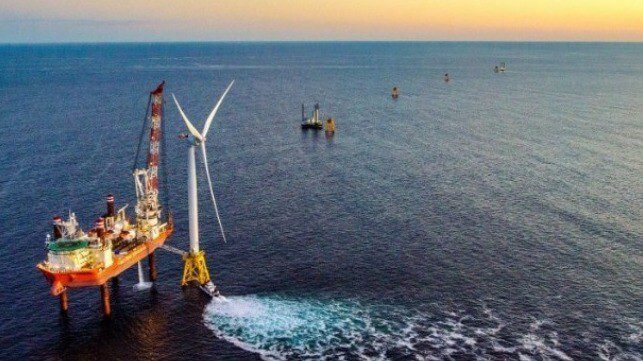On Sunday, Senate Democrats passed a large-scale budget reconciliation package on a party-line vote, enacting many (but far from all) of the Biden administration’s climate policy priorities. The bill – rebranded as the Inflation Reduction Act – represents a compromise between the party’s leadership and Senator Joe Manchin III (D-WV), who returned to the table and negotiated a much smaller package than the White House had originally proposed.
Through a combination of tax hikes on business, reforms to prescription drug pricing and a new fee on methane emissions, the Act will capture an estimated $790 billion for the government’s balance sheet through 2031. It will pay out an estimated $485 billion on climate and health care benefits over the same period – including substantial incentives for the development of offshore wind capacity.
Offshore wind farms are eligible for an investment tax credit of 30 percent, and the subsidy was set to expire in 2025. The Act extends that credit and supplements it with a broad array of supportive tax and grant subsidies, like extra credits for US-made content utilization and worker apprenticeship programs.
The Act also introduces an “advanced manufacturing production credit” for a range of renewable-energy manufacturers, including offshore-wind shipbuilders. Yards like Keppel will now be able to deduct 10 percent of the sale price of the vessel. The list includes similar subsidies for the production costs of critical minerals, nacelles, tower foundations, inverters, batteries, and other key ingredients in the offshore wind supply chain.
“This unprecedented investment in clean energy will supercharge America’s clean energy economy and keep the United States within striking distance of our climate goals,” said Heather Zichal, CEO of AmericanClean Power, the lobby group for solar, onshore and offshore wind. “The IRA will lower consumer costs, enhance grid reliability, and strengthen the nation’s energy security. It will expand our domestic manufacturing base, inject nearly half a trillion dollars into U.S. GDP over the next decade and create more than half a million new jobs – more than doubling today’s clean energy workforce.”
The Act also opens up the geography of potential leasing activity. It allows the Department of Interior to resume wind lease sales off the southern Atlantic seaboard, overriding an executive order issued in 2020. It also expands OCSLA to cover U.S. overseas territories for the first time, and it instructs the Department of the Interior to start evaluating lease opportunities off Puerto Rico, Guam, American Samoa, the USVI and the Northern Mariana Islands.
In good news for the oil and gas sector, the final version of the Act ties offshore wind leasing to offshore oil leasing. It requires the federal government to offer at least 60 million acres of the continental shelf at oil and gas lease auctions in the year prior to any offshore wind lease sale. This minimum threshold is about 75 percent of the area offered up in the Biden administration’s last offshore oil and gas lease sale.
The bill goes next to the House, which is expected to pass it as early as this week, and then to the president’s desk for a near-certain signature.






